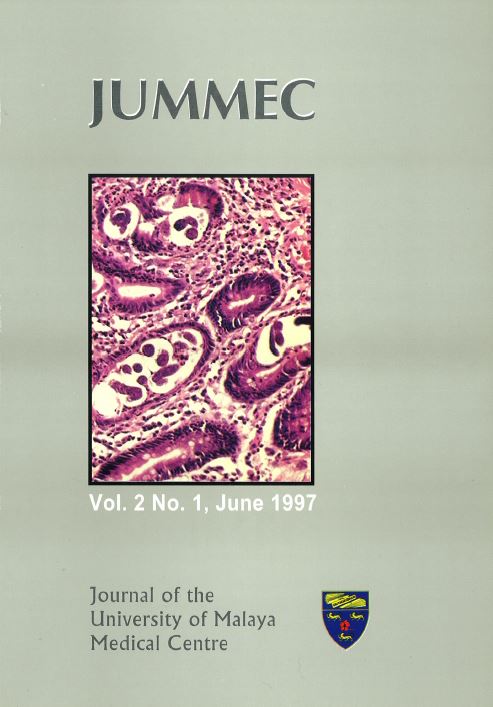High Performance Liquid Chromatography of Dextromethorphan And Its Main Metabolite in Human Urine
Abstract
Dextromethorphan (DM) is 0-demethylated to its main metabolite, dextrorphan (DO), following a polymorphic reaction that depends on the isoenzyme, cytochrome P-il502Di5 [C'i'P2D6). Traditionally, phenotyping of this isoenzyme utilises debrisoquine, individuals with rapid or normal metabolism of debrisoquine are described as 'extensive metabolisers" and those with slower drug metabolism are known as "poor metabolisers". Drug oxidation phenotyping with DM has been found to be in complete concordance with results of phenotyping with debrisoquine. A sensitive High Performance Liquid Chromatography method with both fluorescent and UV detection was developed for the analysis of [JM and [JD in human urine. Prior to analysis by HPLC, the urine samples were subjected to enzymatic hydrolysis of the dextrorphan glucuronides followed by extraction into chlarofarmtisopropanol
mixture. Standard curves for both compounds were linear over concentrations ranging from 0 to 500 ng/ml with a mean linear regression value of 0.00 for DM and 0.97 for DO. The intra-assay error was 4.07% and 7.05% for DM and DD respectively and the interassay error was 10.16% and 7.13% for DM and DO respectively. Following ingestion of 15 mg dextromethorphan hydrobromide, a preliminary oxidation phenotyping was performed on 8 volunteers. The metabolite ratio was calculated as MR = 0-3 hr urinary output of unchanged DM/ 0-3 hr urinary output of DO. The total urinary output of DM ranged from 0 to 4.8'' mg whereas that of DE) ranged from 0.57 to 21.00 mg. The MR values were between 0 to 0.220 in 7 of the subjects tested while 1 subject showed a relatively high MR value of 1.376. This was consistent with the finding that in this same subject the urinary output of DM was the highest, and the output of D0 was the lowest among those tested, thus indicating that this subject is possibly a poor metabiliser of DM. It is concluded that the assay is sensitive for the measurements of levels of DM and D0 in human urine and hence will be utilised in a large scale study of the frequency distribution of drug oxidation phenotyping with DM in a Malaysian population.
Downloads
Downloads
Published
Issue
Section
License
All authors agree that the article, if editorially accepted for publication, shall be licensed under the Creative Commons Attribution License 4.0 to allow others to freely access, copy and use research provided the author is correctly attributed, unless otherwise stated. All articles are available online without charge or other barriers to access. However, anyone wishing to reproduce large quantities of an article (250+) should inform the publisher. Any opinion expressed in the articles are those of the authors and do not reflect that of the University of Malaya, 50603 Kuala Lumpur, Malaysia.


